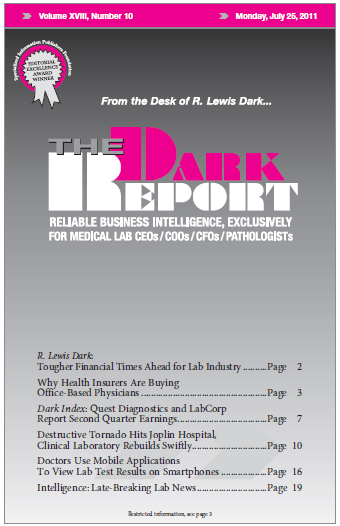CEO SUMMARY: By sending lab test results and other data from the hospital’s electronic health record system to physicians’ smartphones, Holy Name Medical Center in Teaneck, New Jersey, is empowering physicians to manage patient care more efficiently. Today, few hospitals send information directly from the electronic health record (EHR) system to a smartphone (meaning an …
Doctors Use Mobile Apps To View Lab Results Read More »
To access this post, you must purchase The Dark Report.


